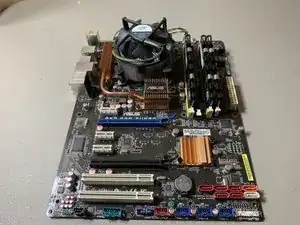
How to Fix a Bent Intel CPU Socket Pin
A motherboard refers to the main circuit board of any electronic device that incorporates one or more printed control boards (PCBs). Traditionally, the motherboard facilitates communication between the various components of the device, passing inputs from peripherals through the CPU, or Central Processing Unit, to be processed and transmitted as output to the speakers, motors, screens, or other components that might make use of them. In some computers, the CPU is able to be plugged directly into the motherboard with a multi-pin interface. However, newer designs integrate the CPU into the motherboard, so that it may not be easily removed.
The CPU is the electrical circuitry responsible for actually processing input. It is capable of performing basic arithmetic and logic operations according to the set of instructions laid out by the program. It commonly works in tandem with RAM, or Random Access Memory, in order to quickly access the information it needs to keep processing efficiently without the bottleneck of data transfer. CPUs can be identified by their square shape, with several pins sticking out of one side if it is removable.